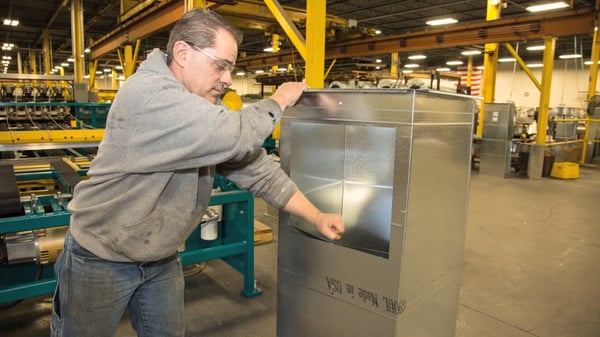Over the past several years, one of the biggest developments in the HVAC industry is the introduction of prefabricated duct work. Prefabrication, also known as manifolding or prefab, refers to the practice of putting together several pieces of duct work in the contractor's shop before the ducts are sent off to the job site to be installed. On the "dry" side of the HVAC industry, prefabrication provides a variety of benefits to both the contractor and the installer, including significant labor savings on both sides of the job. In this post, we'll explain how HVAC prefabrication delivers labor savings both in the shop and in the field.
How Prefabrication Delivers Labor Savings in the Shop
The concept of prefabrication is based on the idea that pre-assembling ductwork in a controlled environment prior to shipping leads better to quality and just in time fabrication. In practice, prefabrication brings up to 40% of the labor into the shop as opposed to the field, but in an incredibly efficient manner with many advantages for the contractor. With the BIM model and producing shop drawings on-hand from the start, contractors practicing prefabrication are able to produce tab and access doors cut outs within the IPI coil line. This technology lends itself to accelerating production during the manufacturing process. Because these access points are already marked during production, there's no need to measure from the print. There can be multiple taps cut out off the IPI coil line, streamlining the assembly process for the technicians. In many cases, eliminating the need for measuring can save a contractor 15-20 minutes per connection.
Additionally, the prefabrication process complimented via the IPI coil line lends itself to less input and greater output and less chance of human error. When it comes to welded ducts especially riser duct these steps have already been accomplished so your welders can stay under the helmet longer and finish their work quicker. The prefabrication process also eliminates the need for grinding and deburring, eliminating another step from the process. Typically the shop labor force is more experienced than those working on the job site which presents the the idea that a lot more complex ductwork construction can be handled quicker and more efficiently in a controlled atmosphere. Effectively, prefabrication can cut a contractor's jobs in half.

How Prefabrication Delivers Labor Savings in the Field
Prefabricated ducts are made based on an a detailer's shop drawing, and the contractor will mark up those shop drawings with exact instructions for how to assemble the different pieces that are shipped out. This leads to fewer mistakes and less doubt and guesswork when assembling ducts in the field.
Prefabrication also leads to fewer duct pieces and items that need to be managed and assembled in the field. This means less individual inventory pieces to keep track of, both in the shop and at the job site, leading to fewer problems and less confusion during shipping and assembly. What all of these advantages add up to is less labor for both sides of the project. With the IPI coil line the contractor can produce ductwork in a more efficient and streamline manner which produces a better deliverable to the field. With the BIM model and CAD technology the installer benefits greatly by only having to hang the pieces, making it easier for both sides to meet tight deadlines in the competitive construction market. Finally the HVAC hardware and software industry have come together which can create greater benefits for the owner, architect, engineer, general contractor and HVAC contractor.

